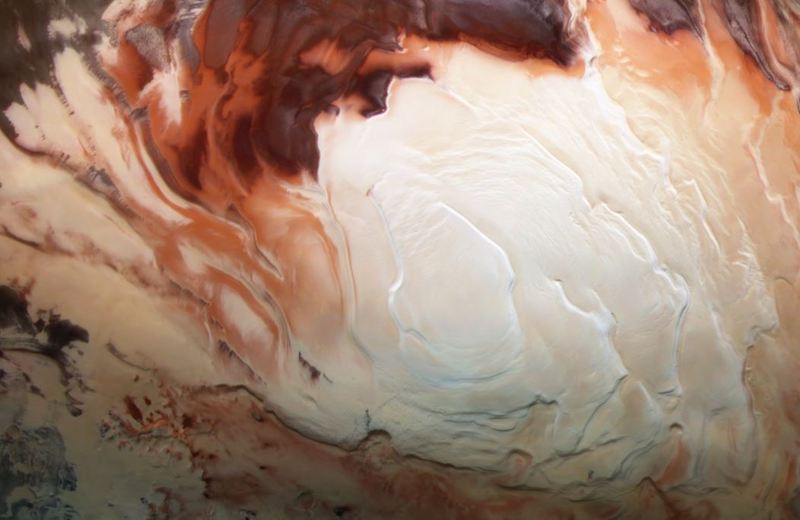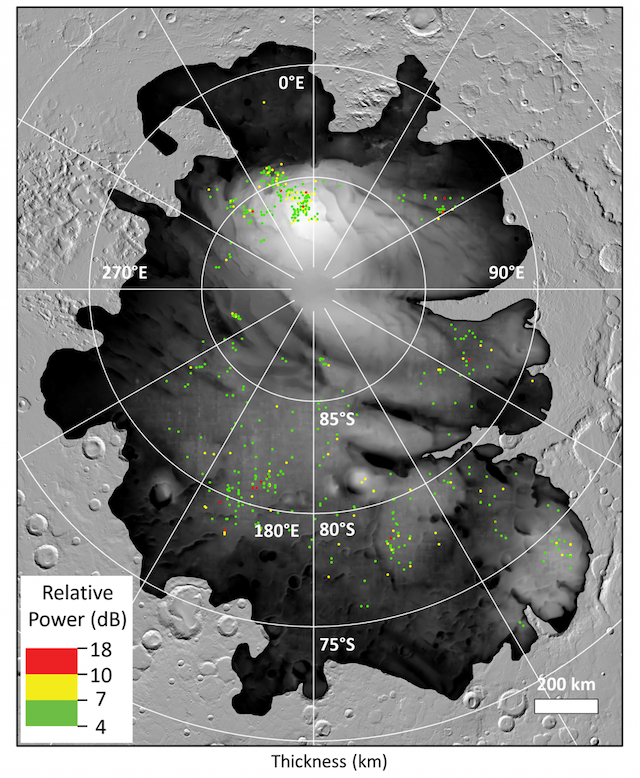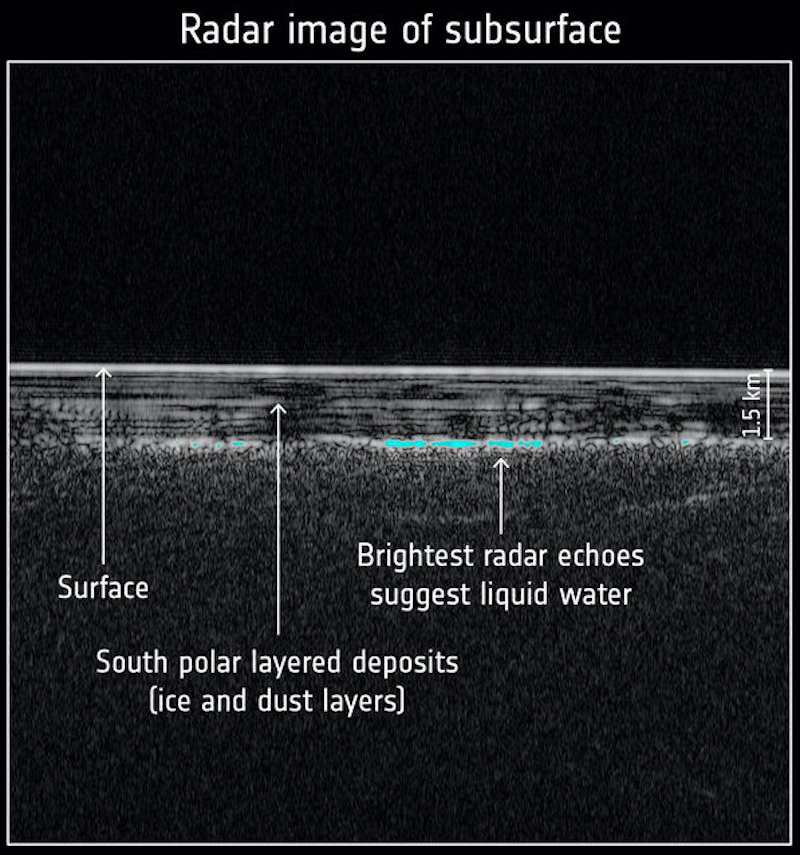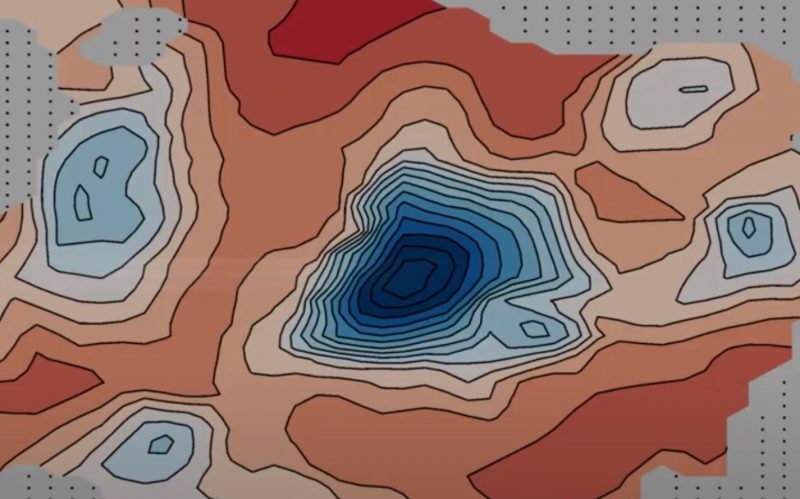
In 2018, the European Space Agency’s Mars Express orbiter found the first evidence for an underground lake on Mars. The lake was deep below the south polar ice cap. What an exciting discovery! Then, in 2020, space scientists reported that they’d discovered three additional lakes near the first one. Any lakes on Mars, even if cold, salty and dark, would increase the potential for some form of life existing on the Red Planet. But are Mars’ subsurface lakes really lakes?
New studies by two different research teams have now cast some doubt on that original discovery. Scientists at Arizona State University (ASU) and ASU School of Earth and Space Exploration have further studied the data from Mars Express and found some possible evidence that the lakes may not actually be lakes at all.
The researchers published their peer-reviewed results in two new papers in Geophysical Research Letters, one on June 16, 2021 and the second on June 28, 2021.
Radar reflections show Mars’ subsurface lakes
When first discovered, the possible lakes appeared, in radar images from Mars Express, as bright reflections, consistent with liquid water. This was incredible, given how cold Mars is and the fact that they were deep below the planet’s south polar ice cap. Scientists concluded, however, that they most likely were liquid water lakes, kept liquid by salts. They were found beneath the south polar layered deposits, alternating layers of water ice, dry ice (frozen carbon dioxide) and dust.
The lakes spanned an area of about 6 to 12 miles (10 to 20 km) across. Similar kinds of lakes, like Lake Vostok, exist beneath the polar ice caps on Earth, so the finding wasn’t too bizarre.

‘Too many’ lakes
The researchers from ASU found dozens more similar lakes (?) after looking at data from the Mars Advanced Radar for Subsurface and Ionosphere Sounding (MARSIS) on Mars Express. They expanded the search for similar radar signals to 44,000 measurements spread across 15 years of MARSIS data. The search covered the entire south polar region of the planet. Lead author Aditya Khuller stated:
We wanted to look beneath the south polar ice and characterize the old terrain lying underneath using MARSIS data.
That sounds exciting, but there’s a problem. You could say that there are too many lakes. Many of the new ones are in areas where it should be too cold underground for liquid water, even with the help of salts. But they look just like the other bright reflections seen on radar that were interpreted to be lakes.

Khuller said:
Usually, radar waves lose energy when they travel through a material, so reflections from deeper down should be less bright than those from the surface. Although there are a few possible reasons for unusually bright subsurface reflections, these two studies concluded that a liquid water component was the cause of these bright reflections, because liquid water appears bright to radar.
Too cold for even salty lakes
The researchers found some radar reflections that were less than a mile (1.6 km) below the surface. At that depth, the temperature is about -81 F (-63 C), cold enough that the water should be frozen, even if it were to contain salty minerals called perchlorates. Perchlorates are known to be common on Mars’ surface.

Co-author and co-principal investigator of the MARSIS instrument Jeffrey Plaut said:
We’re not certain whether these signals are liquid water or not, but they appear to be much more widespread than what the original paper found. Either liquid water is common beneath Mars’ south pole, or these signals are indicative of something else.
Recent volcanism?
One possible way that these lakes could really be lakes if it Mars has experienced recent volcanism below ground. That could plausibly provide enough heat to keep the lakes liquid. There has been new evidence for possible recent volcanic activity elsewhere on Mars, although not below the south pole. According to Khuller:
They found that it would take double the estimated Martian geothermal heat flow to keep this water liquid. One possible way to get this amount of heat is through volcanism. However, we haven’t really seen any strong evidence for recent volcanism at the south pole, so it seems unlikely that volcanic activity would allow subsurface liquid water to be present throughout this region.
If not lakes, then what are they?
The researchers at ASU School of Earth and Space Exploration say that instead of water, the bright regions might be composed other materials, such as saline ice (ice containing salts, where the salt can melt some of the ice). They said in the paper:
We find that contrasts in electric conductivity between materials could also explain the brightness of the reflection. We suggest that this difference could be due to clays, metal-bearing minerals, or saline ice under the polar ice sheet.

More study needed
It seems more study will be required to determine if any of the lakes really are lakes. Even if not, however, the findings will provide scientists with useful data about subsurface conditions on Mars. Many scientists think that microbial life could exist underground on Mars, and studies like these will help them find the best places to look.
Bottom line: Two groups of researchers have published new findings suggesting that Mars’ subsurface lakes beneath the south polar ice cap may not actually be lakes at all. The first few lakes were discovered in 2018 and 2020, and now dozens more nearby have been found in radar images from Mars Express. But many of the new ones are in locations too cold for even salty water to stay liquid.
Source: Characteristics of the Basal Interface of the Martian South Polar Layered Deposits











